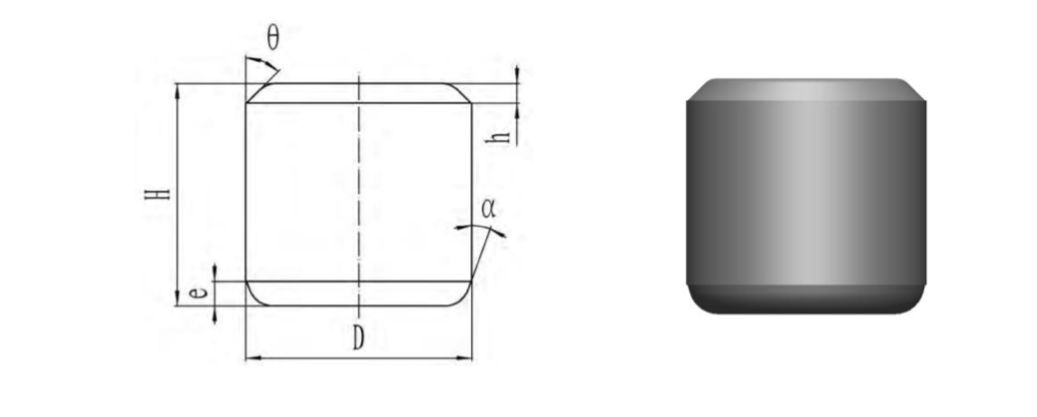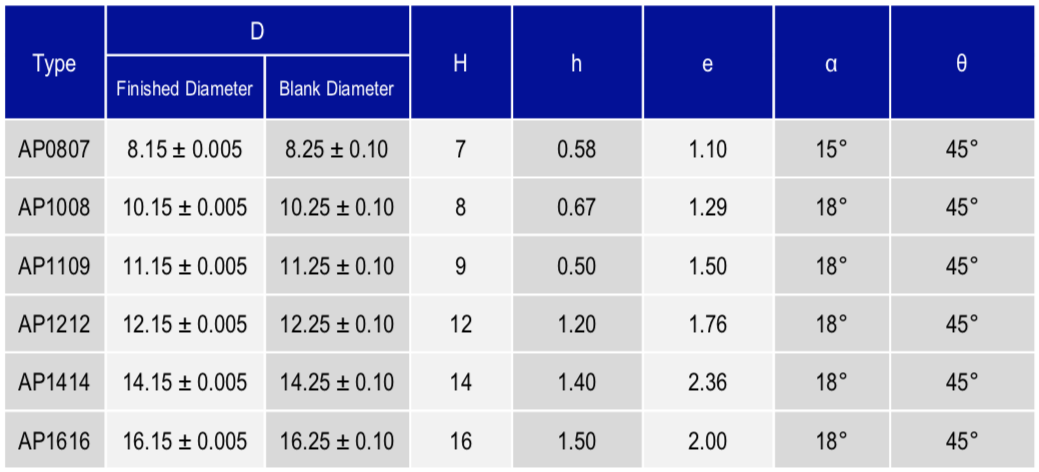Cemented Carbide
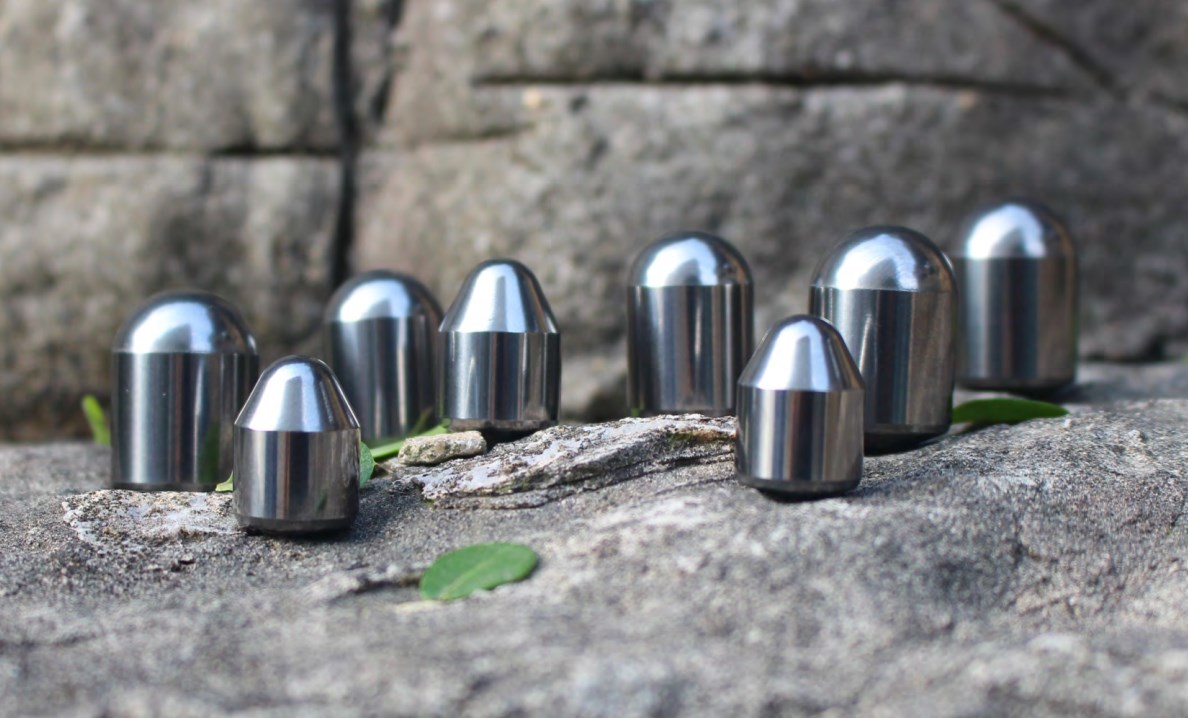
The three advantages of Black Diamond Cemented Carbide
To meet the international upscale market demands for high grade cemented carbide on products of high air pressure DTH bit, tricone bit and top hammer drill bit, Black Diamond Drilling Group has established a specialised Cemented Carbide Section in December of 2015. With a strong foundation of drilling working conditions and extensive knowledge of bit manufacturing and TCI configurations. BD Drill has specialised in researching and manufacturing super strength and toughness cemented carbide geologic and mining tools. The following is a brief introduction of the advantages of our cemented carbide.
Innovation Oriented
- Cemented Carbide Section adheres company’s innovation-oriented concept to utilizes the unique advantages on professional, precise, and deep in drilling industrial, create a new business model in cemented carbide customization for drilling tools.
- BD Drill has a group of senior engineers with rich experience in the research and development of cemented carbides and a group of senior technicians who have been working on carbide producing 20 to 30 years.
- We have imported the most advanced production and inspection equipment from Germany, Japan and other countries to constantly improve the production process and enhance the ability of the new technology utilizations.
Superior Quality
- Raw materials supplier: The suppliers of tungsten carbide we are working with are German wholly owned manufacturer, the raw materials are also manufactured by professional manufacturers to ensure the hi-grade performance of raw materials supplied.
- Quality Control: By adopting the most advanced production technology and quality control system in Europe ensures the products quality is always high.
- Accurate Inspections: Precision is the highest level for superior cemented carbide products. Our company has imported the most advanced physical performance testing equipment from Japan and Germany, the testing results are accurate. At the same time, our cemented carbide testing standard is higher than the GB Standard and the Industrial Standard.
Customised
“Customised for special applications to provide the best carbide solution” is the characteristic concept of BD Drill, combining the accurate ability controlling of end-user’s requirements in the drilling industry to meet the different requirement from different customers. Manufacturing the products with its high quality and better suitability to provide professional personalized service and good interaction to maximize the performance in its specific work conditions.
What is Cemented Carbide?
Cemented carbide was invented by the German Mr. Schroter in 1923, It is a kind of insoluble compound basis with metal hardness (hard phase) and the metal as binder (metal phase) by powder metallurgic method made high strength and high wear resistant material. WC-Co cemented carbide is composed by WC hard phase and Co bonding phase, the hard phase result in cemented carbide’s wear resistant characteristic, the binder phase result in toughness. This composition of normal cemented carbides has the characteristic of contradictory properties, good toughness inverse to poor wear resistance, good wear resistance inverse to poor toughness.
Basic features of Cemented Carbide
1 – High hardness and high wear resistance, especially at higher temperatures still has high hardness means the red hardness feature.
2 – High elastic modulus, good rigidity.
3 – High compressive strength.
4 – High chemical stability and high resistance to acid corrosion.
5 – Low expansion coefficient.
6 – Low fracture toughness.
Application of Cemented Carbide
Commonly known as “the teeth of industry”, cemented carbides are widely used as cutting tools, impact tools, wear-resistant and corrosion-resistant parts, and play an important role in cutting, geological exploration, mining, oil drilling, mould manufacturing and other industries.
Microstructure - Phases in Cemented Carbide manufacturing
- HARD PHASE: The hard phase of WC-Co cemented carbide is WC phase with microstructure of hexagonal system, belong to unequal axis crystal system. The dissolution and precipitation are directional in liquid sintering, which makes the geometrical shape of WC particles and size in difference, appear in angle angular, result in an uneven stress distribution, stress concentration, and affecting the toughness of cemented carbide. The angle of WC phase can be improved by heat treatment to rounding off status, so that stress concentration can be reduced, and toughness can be improved.
- BONDING PHASE: The bonding phase of cemented carbide is Co phase, which has two structures of HCP and FCC. To add rare earth elements in Co that can improve the strength & toughness of the bonding phase, and adding of a small amount of ruthenium, i.e. Co-Ru binder, can stabilize the hexagonal structure of Co in high temperature and increase the toughness and wear resistance of cemented carbides at the same time, and greatly improve the anti- collapsing ability of the carbide blade.
- DECARBURIZATION PHASE: In the sintering process of cemented carbide, due to the lack of carbon in raw materials or decarburization in sintering medium, part of tungsten dissolved in the cobalt phase cannot form WC. The part of cobalt atom participates in forming W-Co-C ternary compound or W-Co binary compound, this kind of compound named decarburization phase.
- NON-CARBON COMPOUND: It also known as free carbon or graphite inclusions, when nest-shaped gathering or schistic small pores are observed by microscope from grinding sheet, that is non-carbon compounds. The main reasons for reacting non-carbon compound are: a. The total carbon content in raw materials is too high; B. Too much carbon content from padding; C. The products in the boatpan are closed to the graphite boatpan wall; D. Dewaxing, pre-sintering, sintering process out of control, etc.
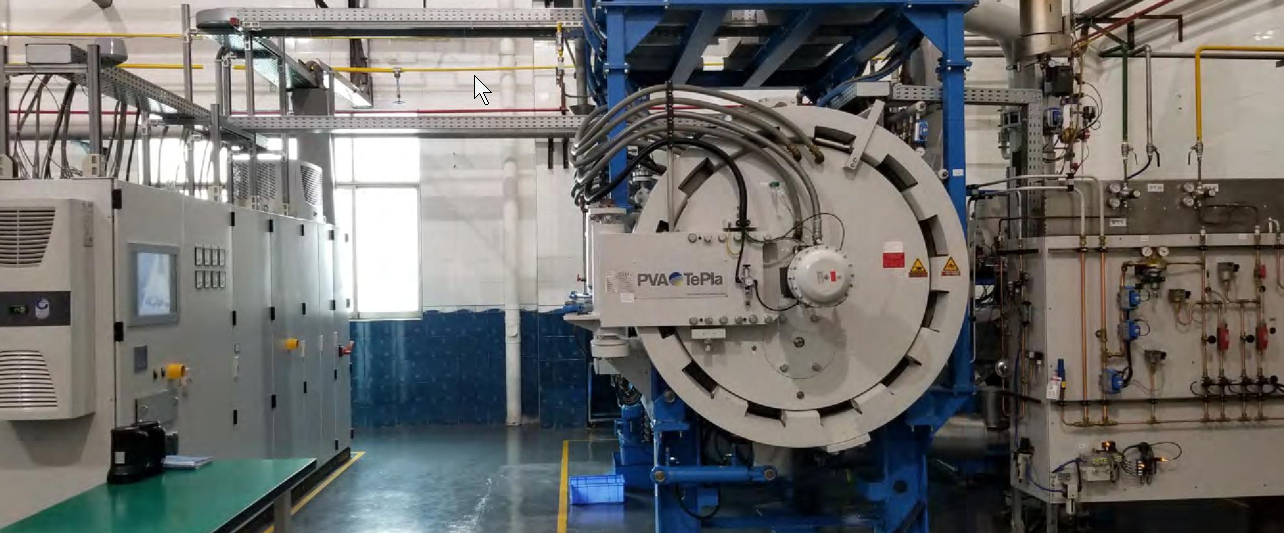
Microstructure Parameter
GRAIN SIZE: The grain size of carbide phase is one of the most important features of cemented carbide. In the production of cemented carbide, the grain size of carbide must be controlled in addition to carbon content controlling. The comparison method is often used in production to compare the most characteristic part of the grinding sheet with the standard pictures of known grain size.
The grain size as usual is based on the grain size of cemented carbide products. The German standard is commonly used, and the grade is divided according to the following standards:
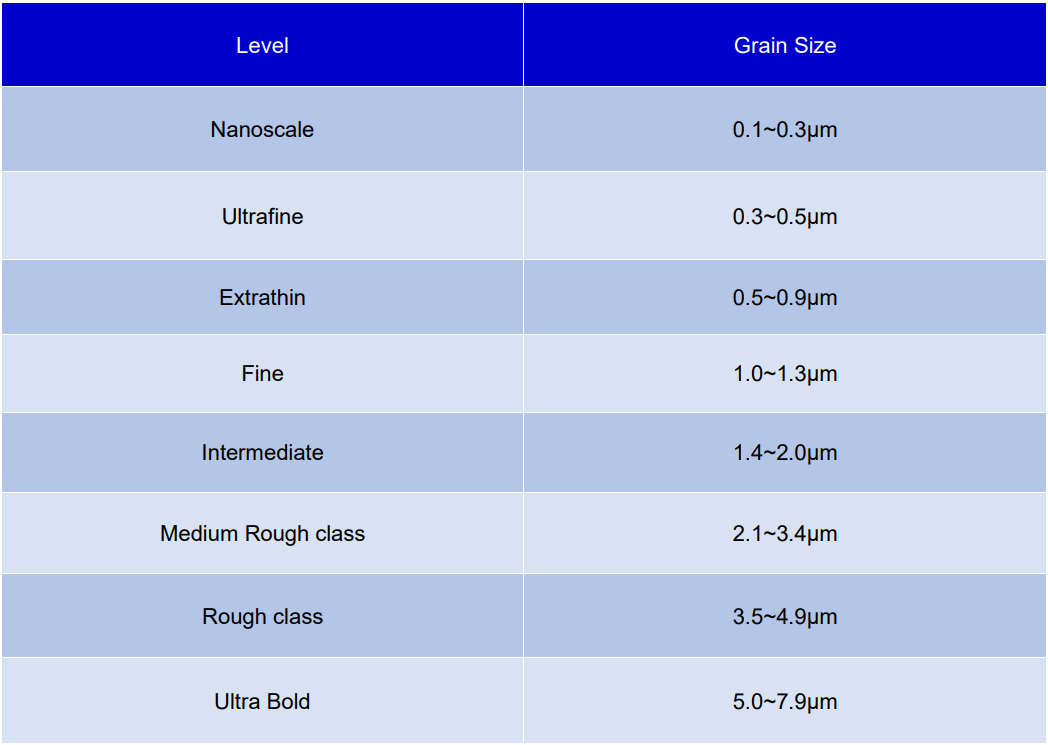
CARBIDE CONTIGUITY: Carbide contiguity is the proportion between interface in carbide and entire surface, its value depends on the amount of cobalt contained, sintering time and temperature which has important role to carbide mechanical properties.
THE MEAN FREE PATH OF BONDING PHASE: The cobalt layer thickness between hard phase and two particles is an important parameter, the changing of cobalt content and particles size along with thickness of cobalt layer which can be represented by mean free path.
POROSITY: The size of porosity is a significant symbol for cemented carbide’s quality. The existing of pore greatly reduced strength and other properties of carbide, the single black point with sharpness border in size 5-40μm can be observed by 100-fold magnification microscopes that is pore. Porosity is proportion percentage of pore in a field.
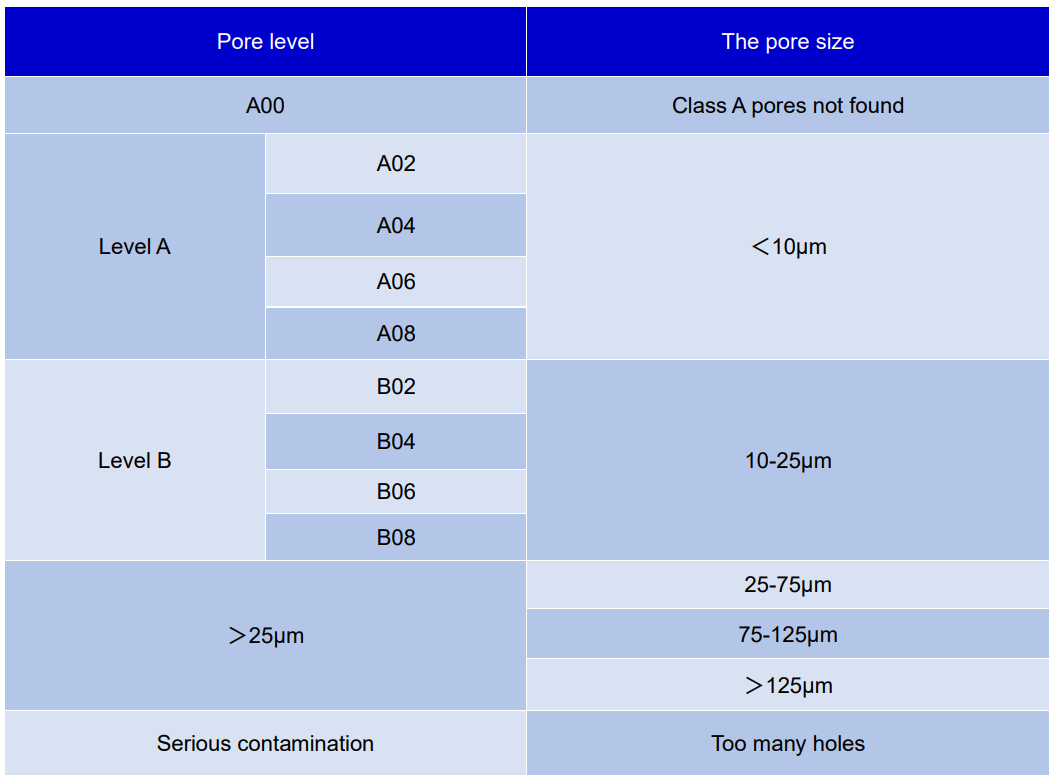
Parameters of Cemented Carbide
CARBON AND OXYGEN CONTENT: Carbon and oxygen play an important role in cemented carbide. Carbon is the life of cemented carbides, and existence of oxygen affects carbon. One oxygen atom will consume 0.75 carbon atom. The carbon content in WC powder includes total carbon content and free carbon content, the total carbon content and free carbon content are measured by mass method. Oxygen is a microelement with low content. Usually, the analysis of oxygen content of powder is to analyse the total oxygen content of powder, including adsorbed oxygen and combined oxygen.
DENSITY: The density of cemented carbides is usually measured by water drainage method. According to Archimedes theory, the buoyancy of carbide in water is equal to the mass of the water discharged by carbide sample. The density of WC-Co cemented 3 3 carbide is usually 14.3g/cm — 15.0g/cm.
HARDNESS: The hardness represented the AXility of against deformation resistance. The hardness of cemented carbide represents as Rockwell A hardness HRA and Vickers hardness HV, Vickers hardness has higher accuracy than Rockwell hardness.
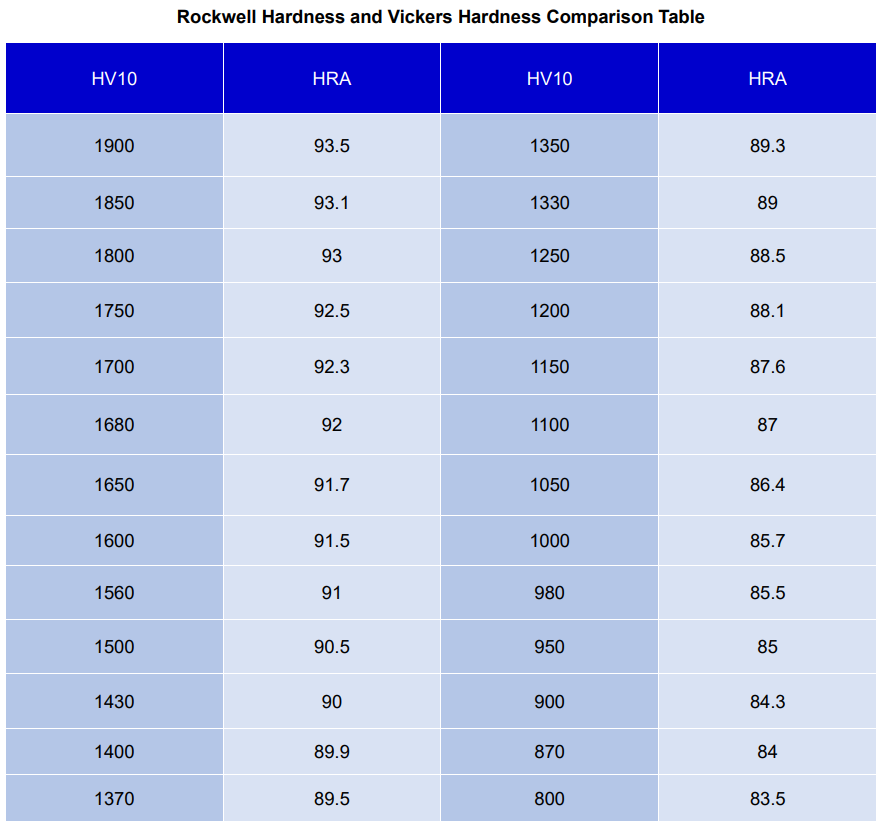
BENDING STRENGTH: Cemented carbide is kind of fragile material, when examine the strength of carbide through tension test, it is hard to get accurate data due to the great influence of sample mounting accuracy. Therefore, the strength of carbide is usually evaluated by measuring the transverse fracture strength, which is called bending strength.
FRACTURE TOUGHNESS: The fracture toughness of cemented carbide is the ability of resistance of crack development and the ability of materials to resist fragile cracking.
COERCIVE FORCE: Cemented carbide is characterized by ferromagnetic materials due to its inclusion of cobalt, a ferromagnetic substance. After the cemented carbide sample is magnetized in the DC magnetic field to the technical magnetic saturation status, remove the external magnetic field, and there is still some magnetism in the cemented carbide. To make the sample completely demagnetized (M=0), a magnetic field in the opposite direction must be added. The magnetic field intensity in this direction is the coercive magnetic force to be measured. The coercive force HC is measured in KA/m; it is the amount of the reverse magnetic field applied to reduce the magnetic strength of the sample to zero.
MAGNETIC SATURATION: Magnetic saturation of cemented carbides (MS) reflects the relative content of the bonding phase in the carbide, thus determining the content range of magnetic materials such as cobalt, nickel and iron in the product and indirectly reflecting the carbon content in the sample. The relative magnetic saturation calculation formula of cemented carbides is as follows: M (%) = ,K — correction coefficient, e– the relative saturation magnetization strength measured in the carbide, and W — the actual cobalt content of the carbide. The content of carbon and impurity in the carbide is estimated after the magnetic saturation value of cemented carbide is measured.
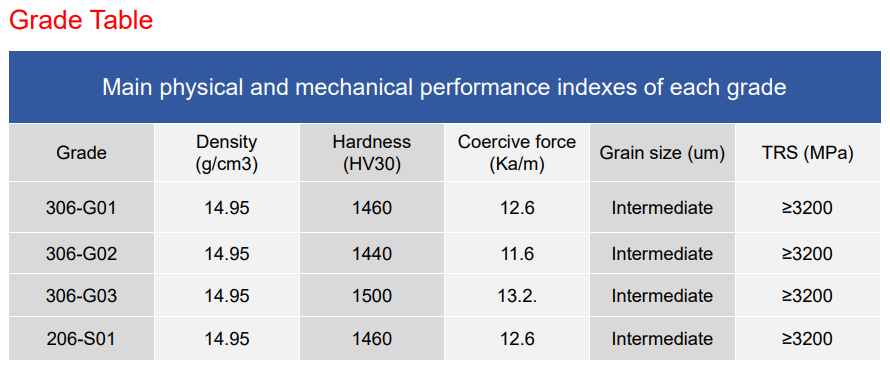
Production Process

The Shape of Carbide Buttons
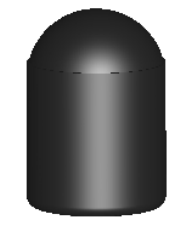
Domed / Spherical Button
Domed / Round Buttons are usually used as gauge buttons of DTH Bits, they are suitable for very abrasive and very hard formations.

Sharp Ballistic Button
Sharp Ballistic Buttons are usually used as front buttons of DTH bits for soft formations where fast penetration rates are possible and button breakage is minimal.
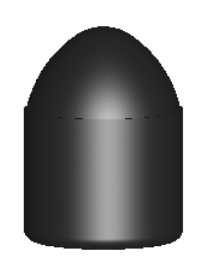
Semi-Ballistic Button
Semi-Ballistic Buttons are usually used a gauge buttons and front buttons of DTH Bits, suitable for medium abrasive and hard formations.
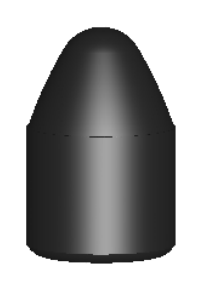
Ballistic Button
Ballistic Buttons are usually used as front buttons of DTH Bits, suitable for medium abrasive and medium hard formations. They can also be used as gauge buttons if the rock is soft.
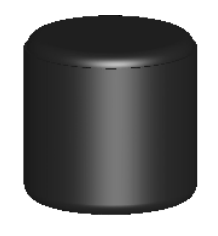
Ballistic Button
Ballistic Buttons are usually used as front buttons of DTH Bits, suitable for medium abrasive and medium hard formations. They can also be used as gauge buttons if the rock is soft.
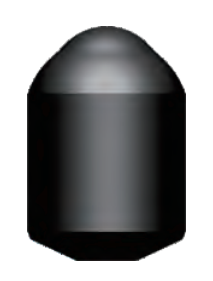
Double Dome Button
Double Dome Buttons are usually used for drilling hard rock, they can provide longer life span 20-40% in premise of re-grinding carbide.
usually used as front buttons of DTH Bits, suitable for medium abrasive and medium hard formations. They can also be used as gauge buttons if the rock is soft.
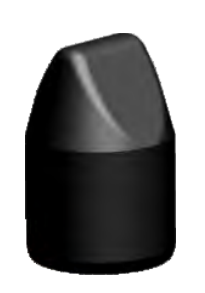
Chisel Button
Chisel Buttons are used in tricone bits for drilling medium-hard formation with the higher penetration rate.
Specifications of Cemented Carbide Buttons
Domed button is mainly used as the gauge button of drill bit suitable in drilling high abrasive and extremely hard formation.
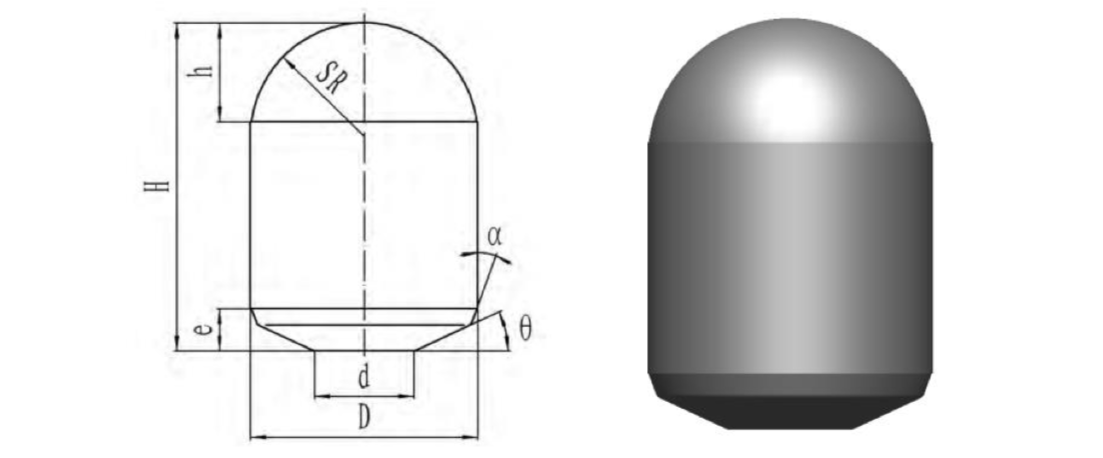
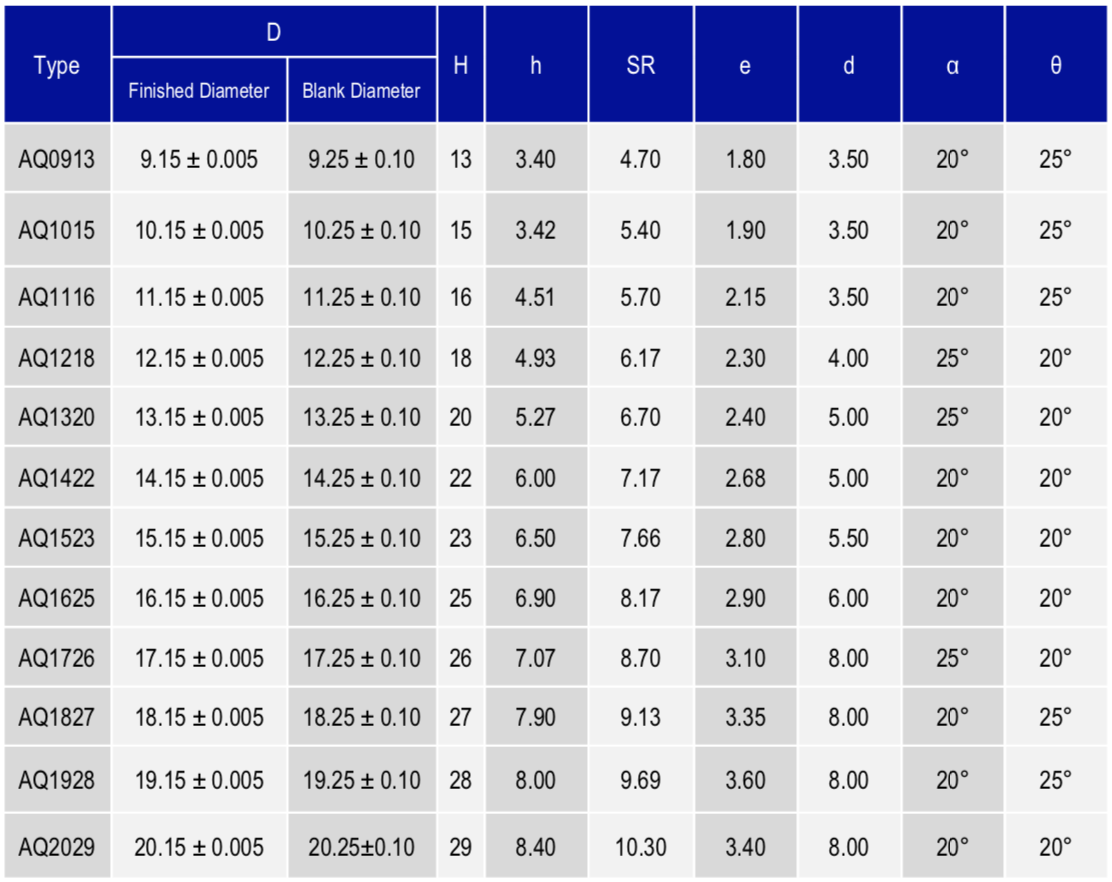
Mainly used as gauge button and front button of bit suitable for medium abrasive and hard rock formation.
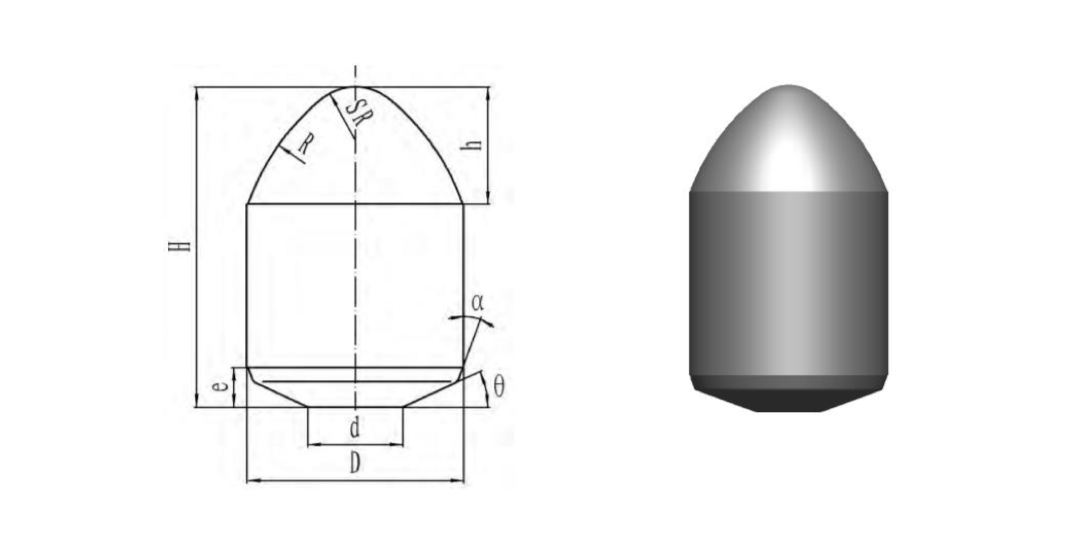
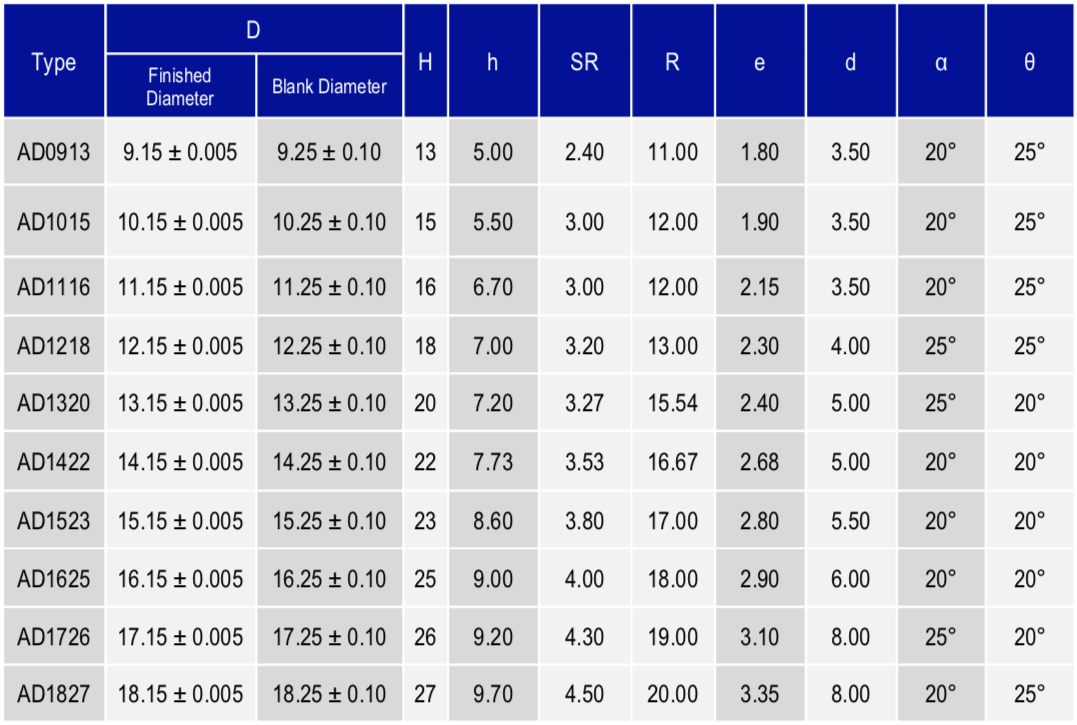
Mainly used as middle button of bit, suitable for medium abrasive and hard formation. Can also be used as gauge button in case of drilling in soft formation.
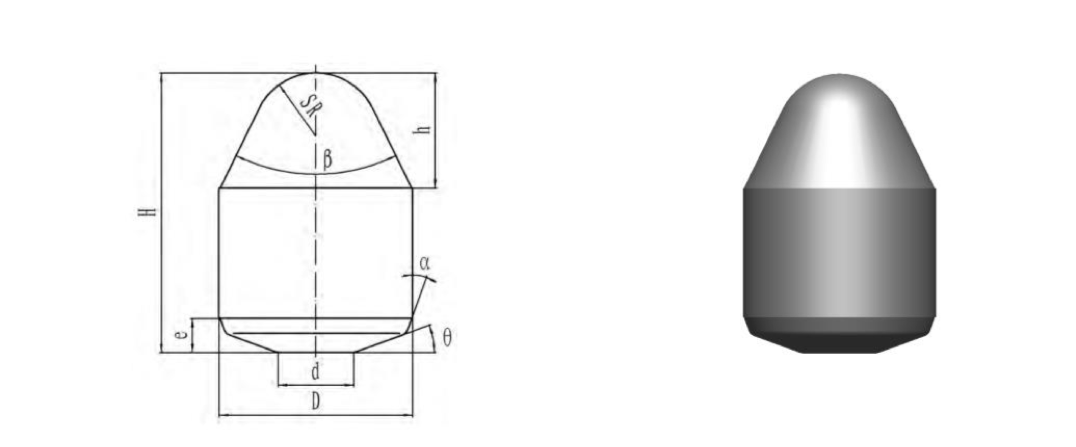
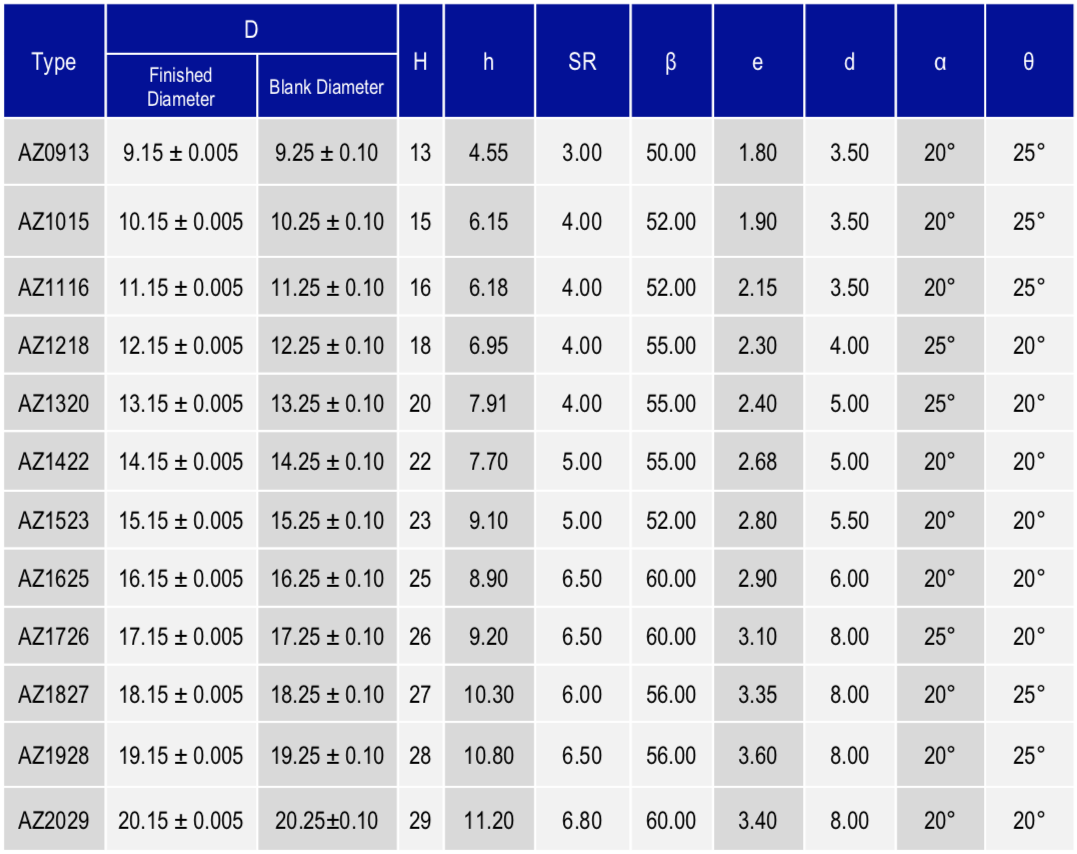
Double Dome buttons are usually used drilling in hard rock, it can provide longer life span 20%- 40% in premise of re-grinding carbide.
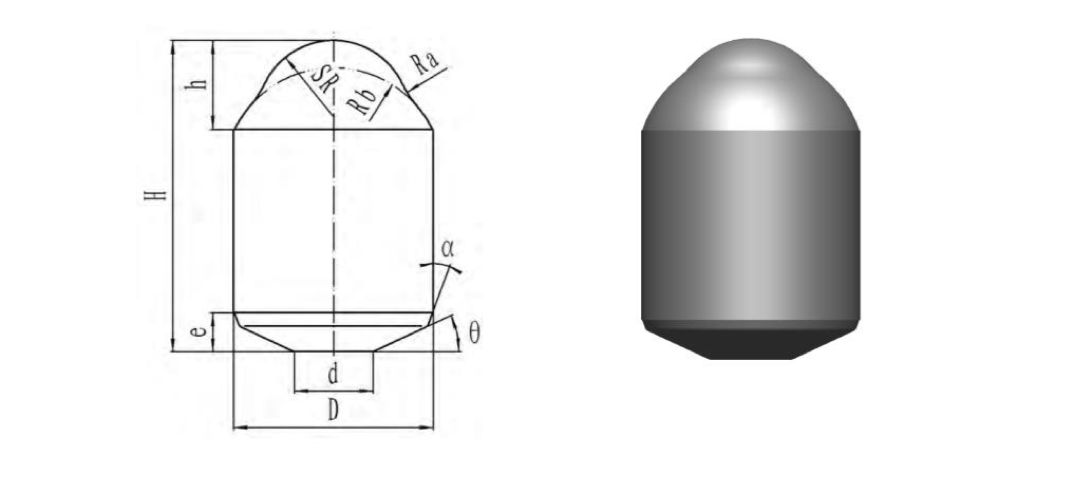
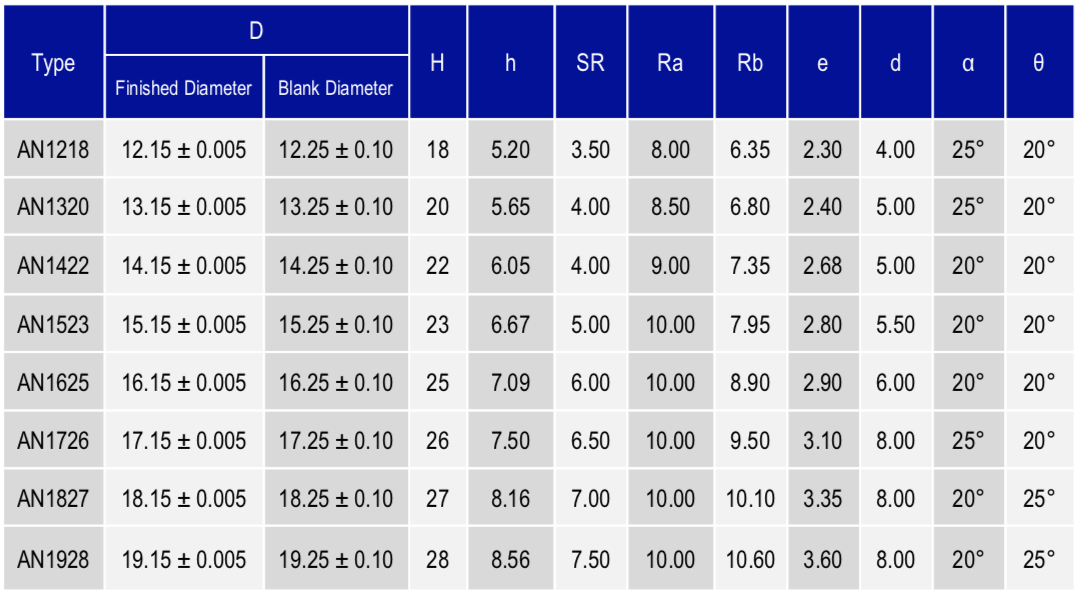
Flat buttons are usually used as protection buttons in bit side to reduce the wear on surface of Bits.
